 |
by brian wang on (#337QB)
Japanese scientists have invented an approach to quantum computing that renders a far larger number of calculations more efficiently than existing quantum computers. They believe the technological building blocks exist and that the quantum loops can be experimentally realized with current technology. Their theoretical works suggests this can scale to millions of qubits for a universal quantum computer. Above the Loop-based architecture for universal quantum computing is shown, featuring a homodyne detector (HD), displacement operation (Disp.), a phase shifter (PS) and a variable beam splitter (VBS). Under the new method, many pulses of light, each carrying information, are allowed to
|
 NextBigFuture.com
NextBigFuture.com
| Link | https://www.nextbigfuture.com/ |
| Feed | http://feeds.feedburner.com/blogspot/advancednano |
| Updated | 2025-12-22 15:33 |
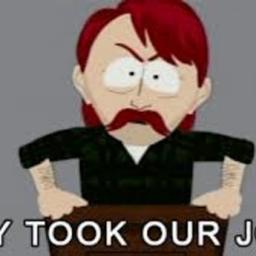 |
by brian wang on (#3374S)
Ray Kurzweil discusses the potential for Artificial Intelligence to eliminate jobs. a prescient futurist in 1900 would say 38% of you work on farms; 25% of you work in factories. That’s two-thirds of...
|
 |
by brian wang on (#336SJ)
There is a critical DoD need to explore potential new approaches of on-demand manufacturing through the concept of a flying missile rail (FMR). A new advanced monolithic aircraft typically requires...
|
 |
by brian wang on (#336K2)
Riksbank, Sweden’s central bank, estimates that cash transactions made up only 15 percent of all retail transactions last year, down from 40 percent in 2010, thanks in large part to massively popular mobile payment services. Riksbank and the central banks of other countries are taking a serious look at blockchain, the technology that makes Bitcoin and other cryptocurrencies run. These systems, also called distributed ledgers, rely on networks of computers, rather than a central authority like a bank, to verify and record transactions on a shared, virtually incorruptible database. Government bankers across the world believe this has the potential to
|
 |
by brian wang on (#333MA)
CRISPR gene-editing technology has the potential to treat—and possibly cure—any number of diseases and there are currently five ways it can be delivered into humans. 1. Gels and creams for anti-HPV....
|
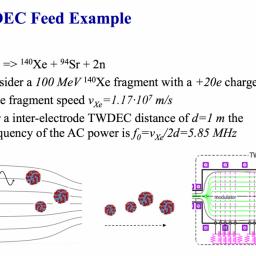 |
by brian wang on (#331VF)
Fission fragment direct energy conversion (FFDEC) into electricity can dramatically improve the specific mass of fission-based electric propulsion rocket. An EPRI study by A. G. Tarditi, J. H. Scott focused on the conversion via traveling wave DEC (direct energy conversion), that has the advantage of being able to generate high frequency power (MHz range) and does not require high voltage technology, unlike electrostatic energy conversion. The fission fragment direct energy conversion (FFDEC) is considered as a best fit to an accelerator-driven fission core to improve the efficiency and the overall specific mass. This proposed approach is complementary to the fission
|
 |
by brian wang on (#331Q2)
The problem with space nuclear propulsion is NOT raw power, but how to eliminate waste heat. The more efficiently we can generate thrust, the less waste heat produced. Can we have our cake and eat it too? Can we have a non-thermal nuclear propulsion minimizing waste heat? * Yes. By making the fuel into dust. There is the original dusty fission fragment version. These systems can have ISP of 500,000 to 1.5 million. However multi-gigawatt systems would have only a few dozen newtons of thrust. The systems could potentially reach 5% of the speed of light. There is also afterburner
|
 |
by brian wang on (#3316C)
Advanced fission power systems can dramatically enhance space exploration capabilities in the near and farther term. Energy conversion options that are usually considered are heat engines (Rankine cycle, Brayton cycle and Magnetohydrodynamic – MHD) and direct conversion engine (the so-called Traveling Wave Direct Energy Convertor – TWDEC). There was a proposal for Traveling Wave Direct Energy Convertor that also surveyed advanced nuclear fission space power concepts. Low specific mass (less than 3 kg/kW) in-space electric power and propulsion can drastically alter the paradigm for exploration of the Solar System, changing human Mars exploration from a 3-year epic event to an
|
 |
by brian wang on (#3312K)
DARPA’s Mobile Force Protection (MFP) program seeks scalable, modular, and affordable approaches with small footprints in terms of size, weight, power, and number of people needed for operation. With...
|
 |
by brian wang on (#3312N)
A Brane Craft is an ultra-thin spacecraft (~55 microns) • It weighs about 80 grams, yet can deorbit up to 2 kg • It may be mass-produced • Potential 100X decrease in orbit cleanup costs • Many other potential uses: – Asteroid inspectors – Asteroid re-directors (multiple per asteroid, dock or high speed impact) – Planetary and lunar orbiters • Significant technology development is required in NASA NIAC Phase II An initial concern was that thin-film solar cells and electronics could not provide a radiation tolerance of up to 10 megarads total integrated dose (TID). Thin film Copper Indium Gallium
|
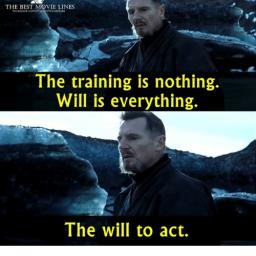 |
by brian wang on (#3310G)
Dana Andrews had looked at a near term system for achieving 2% of the speed of light. It used an advanced ion drive and a couple of small nuclear reactors. It would weigh 4000 tons which is about the...
|
 |
by brian wang on (#330YS)
There a great deal of concern about automation eliminating human jobs. Spinning a sign seems to boost the attention that people give to signs by about 80%. Sign spinners are paid about $50 to 150 per...
|
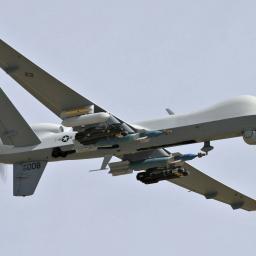 |
by brian wang on (#330WS)
US Air Force Chief of Staff David Goldfein has added urban warfare to his list of top focus areas. * The US Air Force may not be well equipped to handle precise urban warfare. * 80 percent of...
|
 |
by brian wang on (#32YMM)
PitchBook has an update for Q3 2017 of ICOs and venture capital investment in the blockchain. * regulatory statements in China and the US have yet to temper market enthusiasm for the red-hot cryptocurrency and ICO market. Regulatory action against secondary exchanges in China may put short-term downward pressure on an overheated market, but will ultimately prove bullish. * SEC recognition that some tokens are securities and some are not is a sensible approach that will encourage the best ideas to continue in a sandbox, while less-innovative projects will face more scrutiny. * VC investment in blockchain companies has remained
|
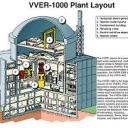 |
by brian wang on (#32YHY)
The amount of used nuclear fuel will continue to increase, reaching around 1 million tonnes by 2050. The uranium and plutonium that could be extracted from that used fuel would be sufficient to...
|
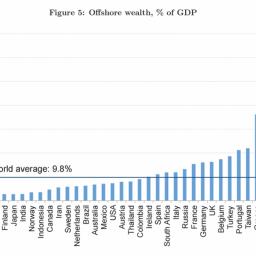 |
by brian wang on (#32YF4)
Researchers estimate the amount of household wealth owned by each country in offshore tax havens. The equivalent of 10% of world GDP is held in tax havens globally, but this average masks a great...
|
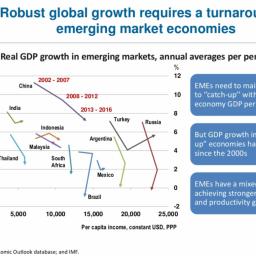 |
by brian wang on (#32YF6)
For emerging countries, the OECD raised by 0.2 percentage point its forecast for China’s economy to expand this year, to 6.8 per cent. The outlook for 2018 was similarly raised, to 6.6 per...
|
 |
by brian wang on (#32Y8Q)
If you restructure aluminum at the molecular level, as Boldyrev and colleagues did using computational modeling, you could produce an ultra-light crystalline form of aluminum that’s lighter...
|
 |
by brian wang on (#32Y8S)
Lockheed has released a video of the 30-kilowatt Advanced Test High Energy Asset or ATHENA laser. The footage is from a test in New Mexico last month, where ATHENA took out 5 unmanned drones during...
|
 |
by brian wang on (#32Y8V)
US Shale oil production is over 6 million barrels per day and overall US crude oil production is at 9.51 million barrels per day.
|
 |
by brian wang on (#32VW2)
In March, 2017, construction has been underway for the last couple of years for the California High speed rail. They are working on more than 119 miles of the system from Silicon Valley to the...
|
 |
by brian wang on (#32VT5)
HRL Labs has made a breakthrough with a technique for successfully 3D printing high-strength aluminum alloys—including types Al7075 and Al6061—that opens the door to additive manufacturing of...
|
 |
by brian wang on (#32VKK)
Stephen Hsu reports on his team work to use novel machine learning methods (“compressed sensingâ€) to ~500,000 genomes from UK Biobank, resulting in an accurate predictor for human height...
|
 |
by brian wang on (#32VKN)
A team of HTC talent will join Google as part of the hardware organization. These future fellow Googlers are amazing folks we’ve already been working with closely on the Pixel smartphone line, and...
|
 |
by brian wang on (#32TWE)
Microsoft co-founder Bill Gates says if he could go back in time, there’d be something more intuitive than the two-handed Ctrl-Alt-Delete command to interrupt a process. In 2013 Gates said it...
|
 |
by brian wang on (#32TWG)
China plans to more than double its atomic power capacity in the next decade, bucking the trend of consolidation in western Europe and North America. The Asian nation’s expansion will contribute to a...
|
 |
by brian wang on (#32TN5)
Carnival of Space 527 is up at The Evolving Planet. Universe Today – Cassini Conducts a Final Flyby of Titan Before Crashing into Saturn The NASA Cassini spacecraft made hundreds of passes over...
|
 |
by brian wang on (#32S4P)
Kymeta’s mTenna® technology and KĀLO services will enable a realm of brand new experiences from anywhere in the world that characterize what the truly connected car should be capable of. The...
|
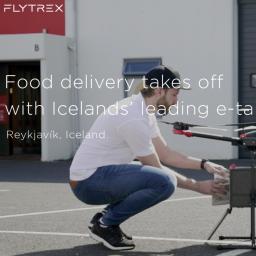 |
by brian wang on (#32S2Z)
Flytrex is 13 person Israeli startup that has implemented a food delivery drone service in Iceland. Flytrex will setup drone services for client companies. They use commercial drones $2000-8000....
|
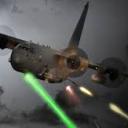 |
by brian wang on (#32RDQ)
The US Air force Special ops command will ground demo a combat laser intended for a AC130 gunship in 2018 and then go airborne with shooting the laser a couple of years after that. Webb’s...
|
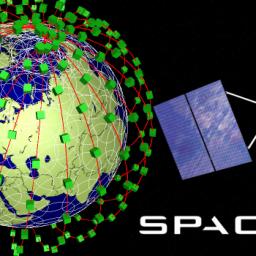 |
by brian wang on (#32RDS)
Spacex has trademarked the name Starlink for its planned 4000 satellite global internet delivery network. The system will also provide earth imaging.
|
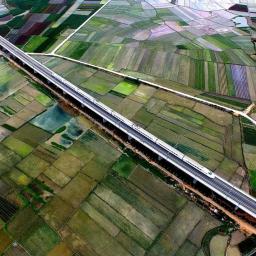 |
by brian wang on (#32RBY)
When finished sometime in the first half of the 2020s, tens of billions of dollars would have been spent and passengers will be able to travel between Kunming and Singapore in just 10 hours. A more...
|
 |
by brian wang on (#32R9V)
Double precision exaflop/second has been the traditional definition of general purpose exaflop supercomputer. There are domain-specific machines and even the American DoE Summit and Sierra...
|
 |
by brian wang on (#32R60)
Satoshi Matsuoka†tweeted out details of a technical presentation on upgrades to the second most powerful supercomputer in the world, Tianhe-2A (improved from 56 petaflops to 95 petaflops).
|
 |
by brian wang on (#32R3Q)
China is upgrading its number two supercomputer with new Chinese-made Matrix-2000 GPDSP accelerators. They will replace the existing Intel Knights Corner Xeon Phi coprocessors that were installed in...
|
 |
by brian wang on (#32QZD)
Scientists at The University of Manchester have created the world’s first ‘molecular robot’ that is capable of performing basic tasks including building other molecules. The tiny robots, which are a...
|
 |
by brian wang on (#32QPQ)
The US Navy is performing planned midlife refueling and technology upgrades to the Nimitz aircraft carriers. Carriers are planned to operate for 50 years and halfway they get nuclear refueling and...
|
 |
by brian wang on (#32QKY)
A mission concept, known as the Asteroid Touring Nanosat Fleet, would require 50 esail powered probes to return for a flyby of Earth after asteroid flybys, as the nano-spacecraft would only be able...
|
 |
by brian wang on (#32QHF)
The e $15 million Global Learning XPRIZE is funded by a group of donors including the Dick and Betsy DeVos Family Foundation, the Econet Foundation, Scott Hassan, the Merkin Family Foundation, John...
|
 |
by brian wang on (#32Q73)
As recently as 2014, the Intergovernmental Panel on Climate Change (IPCC) had indicated that there we would CO2 emissions would soon exceed the level where 1.5 degree celsius warming over the...
|
 |
by brian wang on (#32NKQ)
ASEAN’s combined nominal gross domestic product (GDP) is already over US$2.8 trillion (S$3.8 trillion) and if counted as a single entity, it would rank sixth in the world, behind the United...
|
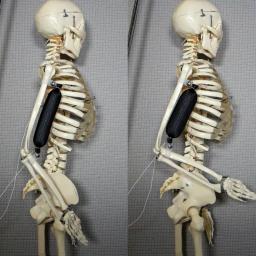 |
by brian wang on (#32N0J)
Columbia University researchers have made a self-contained soft actuator three times stronger than natural muscle, without the need of externals, signals a breakthrough in soft robotics. Researchers...
|
 |
by brian wang on (#32MN8)
The US, Japan and South Korea have not killed North Koreans in the 21st century. Israel has killed about 170 North Koreans and injured 2000 in relations to nuclear weapons from an incident in 2004...
|
 |
by brian wang on (#32M6Z)
China is moving rapidly towards using nuclear power as an industrial heat source and as a direct replacement for coal, Yulong Wu, CEO of Chinergy, told a side event at the International Atomic Energy...
|
 |
by brian wang on (#32M46)
The previous estimates of the amount of CO2 that could be released before world temperature rose to 1.5C above pre-industrial levels was 70 billion tonnes of Carbon after 2015 but a reassessment...
|
 |
by brian wang on (#32KYN)
A 40-foot (12.19-meter) electric bus from Proterra Inc traveled 1,101.2 miles (1,772.21 km) at low speed without recharging, cruising to a new electric vehicle range record, the California...
|
 |
by brian wang on (#32KQZ)
Economists and analysts are now projecting Chinese yuan is likely to remain stable for the next couple of years — the median of analysts’ end-2018 forecasts is 6.8, and for end-2019 it is 6.7....
|
 |
by brian wang on (#32J6Q)
Joe Cirincione makes the easonable case that the USA could not successfully shoot down the North Korean ICBMs. Joe Cirincione is president of Ploughshares Fund and the author of Nuclear Nightmares:...
|
 |
by brian wang on (#32J4W)
Vitalik Buterin created Ethereum. He projects that Ethereum will have Visa scale transaction per second in a couple of years. Currently Bitcoin is processing a bit less than 3 transactions per second...
|
 |
by brian wang on (#32J35)
The next big war in the Middle East will be another war between Hezbollah and Israel. It will begin because Hezbollah has vastly increased the size and sophistication of its arms (missiles) in Lebanon despite clear and consistent warnings from Israel and the international community not to do so. Hezbollah has about thirty times the number of missiles as were fired during the 2006 war. For the past several years, Israel has been warning Hezbollah, first indirectly and then publicly, about its “red lines†in Syria, which included the transfer of sophisticated weapons from Syria into Lebanon. Outgoing Israeli air
|